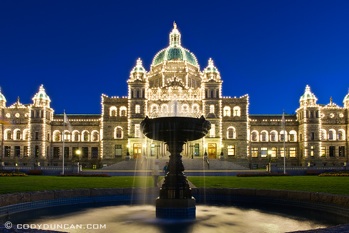Ideas, images, sketches for our Pacific Opera production

Workbook: The Barber of Seville
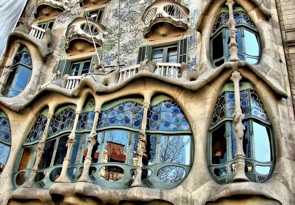
Gaudi inspired set by Ken, brings back fond memories of our trip to Barcelona many years ago, when we stayed directly across from the building, left, which sits in the centre of the Eixample district with its distinctive corner cut buildings. On a separate trip we visited Seville, almost completely by accident and got hopelessly lost but didnt visit any barbers. Morris did, however, visit a barber in Ortigia district of Siracusa, recently, where he tried his best to communicate his stylistic ideas to a very stubborn old Sicilian, below, and to the right the outside of his shop.

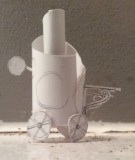














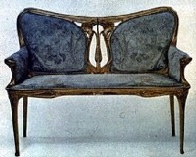
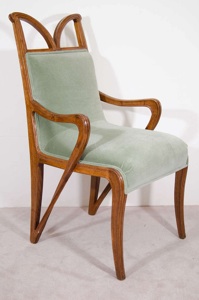

Above, left, Ken creates a model for the Barber of Seville set, a fanciful, circular affair that doubles as interior and exterior, plus or minus orange trees and furniture, which will follow examples of the Art Deco style. As pictured below, Art Deco furniture is one of the most distinctive and we love it because it is both elegant and simple, often asymmetrical, and always influenced by the beautiful and perfect shapes and lines of nature.
We borrow heavily from architectural features of the Art Nouveau period, Art Nouveau is considered a total art style, embracing architecture, graphic art, interior design, and most of the decorative arts including jewellery, furniture, textiles, household silver and other utensils and lighting, as well as the fine arts. According to the philosophy of the style, art should be a way of life
Of course we dont want to literally copy the style only to use it as an influence to create something really new and appealing that has its roots in history, and in this way we can present the past in a modern light bringing fresh ideas to both the period and the opera itself. One tries to be open to influences without being a slave to them. All the same, there is a timelessness to Art Nouveau that is the ideal goal of any art. Below, the curvature of the style gives it an almost melodic shape.
Above and below, Ken works with folded paper until he finds just the right form, practicality and whimsy in sublime combination. Below, details of the moving Barber shop and the central staircase. Above, right, a top view of the space
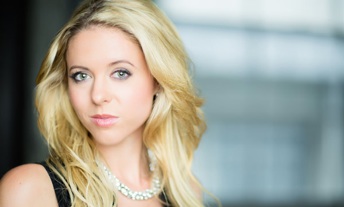
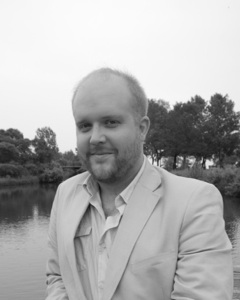
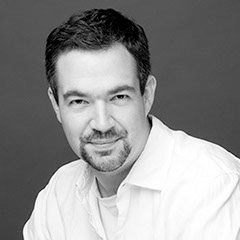
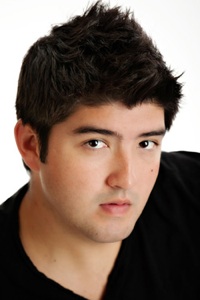
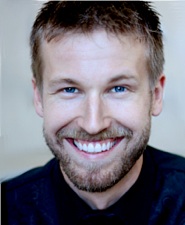
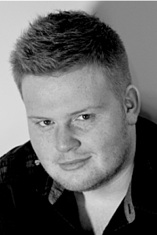
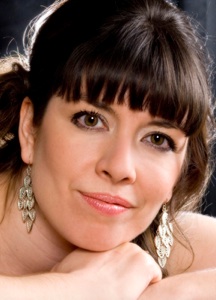
Antonio Figueroa, right, plays the Count of many disguises, Almaviva. Most of the principles have done one version or other of the Barber of Seville, bringing experience and perspective into our rehearsal, thank goodness
Principles Sylvia Szadovszki, as Rosina, Clarence Frazer, right, as Figaro, Peter McGillivray, left, as Doctor Bartolo, and Giles Tomkins, below, as Don Basilio, and lower left, Genevieve Levesque, as Berta, lower right, Andrew Erasmus, as the Sergeant, and between them Nathan McDonald as Fiorello.
Andy and Nathan have been with the opera chorus at Pacific Opera for a while and are moving into larger roles, very exciting. The chorus has many fine and talented singers, and it was a pleasure to work with them again, especially under the guidance of chorus master Guiseppe Pietraroia,
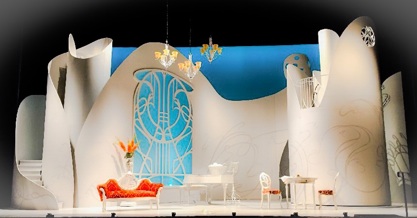
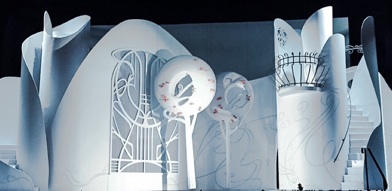

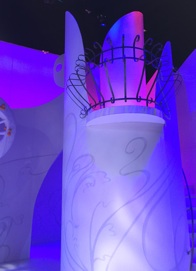

Detail of Kens stunning set design, left, and above, an interior while below, left, a view of the set without lights, just to see how much colour Kimberly Purtell put into the show, and right, a balcony
Set technical drawings, as simple and elegant as they may look dont even begin to tell the story of how difficult and complicated the building of it was. Headed by technical director Derek Hawksley, the construction team took on a big task. Meanwhile, Sandra McLellan, head of wardrobe, was busy with her team converting Dana Osborne costume sketches into beautiful onstage reality.

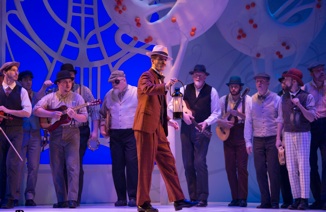

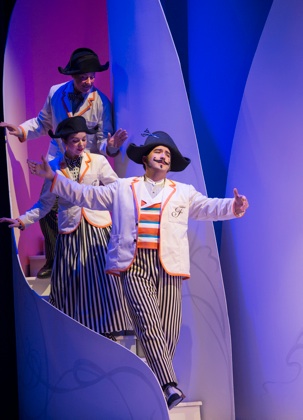

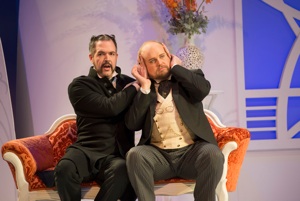
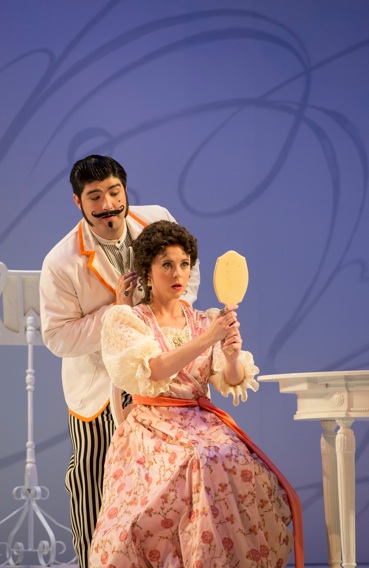
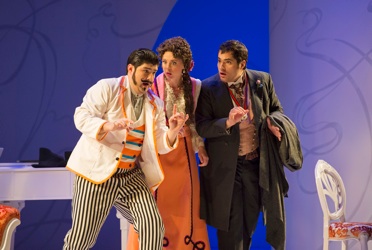
David Cooper production shots, above Figaro does Rosinas hair. Left Bartolo massaged with the finer points of scandal. Right, Figaro arrives with assistants, and left, shaves a passerby. Lower, left, Fiorello tries to instruct his unruly musicians in the art of being quiet. Right, below, Fiorello helps the Count woe Rosina, and bottom right, Count Almaviva, Rosina, and Figaro spend a rather inordinate amount of time fleeing the scene.
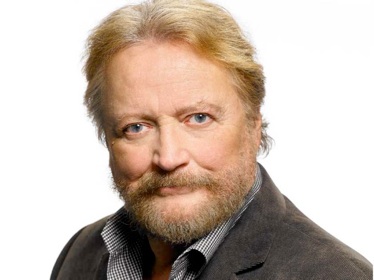
For The Barber of Seville, Maestro Timothy Vernon conducts an orchestra of over forty pieces, and masterfully. We are always in good hands at Pacific Opera Victoria, where music is superbly, and precisely handled, but with ease and graciousness, always allowing every piece its own unique life on the stage.
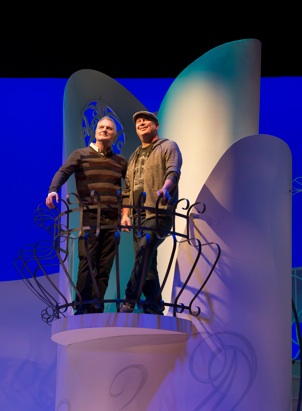
As always, Ken and Morris try to rise above it all, right, on the balcony of the turning tower. This was another photo taken by David Cooper for an article in which it never appeared, but we have the keepsake of this photo, as well as many great memories of another wonderful trip to Victoria.
